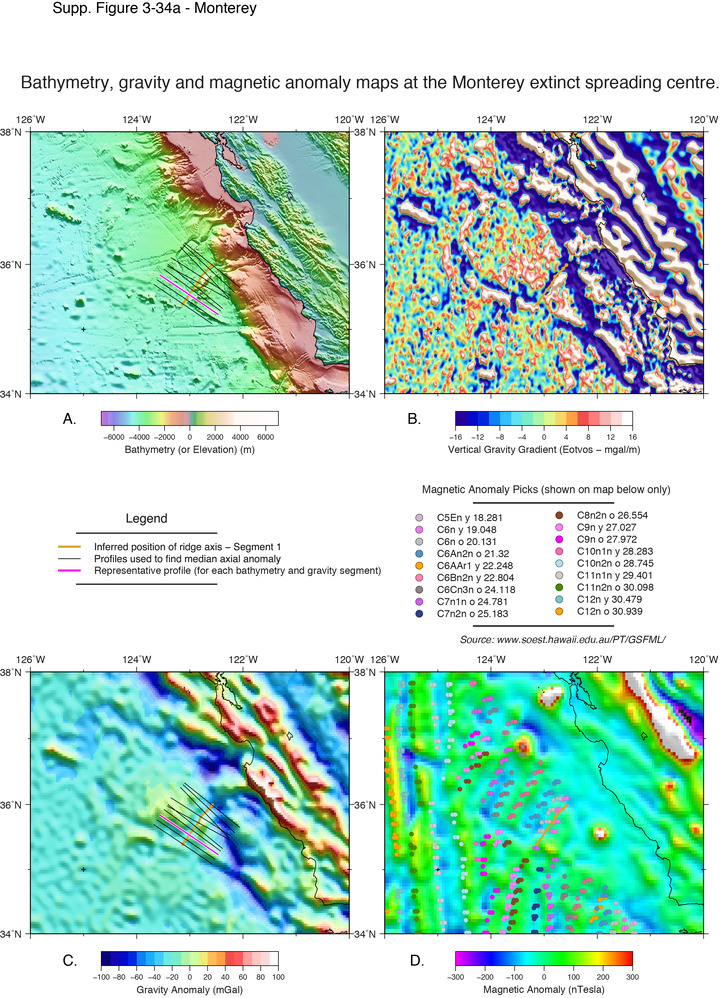| Ocean: | Pacific |
| Spreading centre type: | Extinct microplate spreading ridge |
| Time of cessation: | 20 Ma, after C6 (Lonsdale 1991) |
| Cessation style: | Not constrained by available data |
| Later deformation or volcanism: | Dextral-displacement of the Monterey segments after cessation of spreading, relative to each other is proposed by Lonsdale (1991). |
Lonsdale (1991) evaluated structures of the ocean floor to the west of the southern USA and northern Mexico to investigate several identified coastal extinct ridges (Mathematician, Guadalupe and Magdalena) and also proposed a new extinct spreading centre west of Monterey, with accompanying microplate. The Monterey plate is interpreted as containing a single axial segment that is oriented at an oblique angle, trending SW from the coastline and stretching for approximately 100 km. Seafloor fabric within the region of the inferred axis is dominantly NE-SW and the Morro FZ traces the direction of motion on the transform that was perpendicular to the ridge axis. Timing of extinction is taken to be post Chron C6 from magnetic anomaly identifications (Larson, 1991).
A 52 km wide section of crust from Farallon plate is also believed to have accreted near the Bonanza Seamounts (Lonsdale 1991). Lonsdale observes that extinct spreading centres may have the morphology of either a slow-spreading ridge, with a deep trough, or can be influenced by volcanism after cessation, in proximity to a subduction zone – “particularly on the outer slope of a trench” (Lonsdale 1991, p.121).
Lonsdale (1991) infers that interaction with the North American subduction zone with an ever smaller fragment of Farallon plate crust contributed to the development of additional spreading centres as the plate fragmented on entry to the system. These fragments are argued to have rotated in order to match Pacific plate motion, in a clockwise direction which Lonsdale (1991) argues leads to migration of transform faults, which seek to maintain their perpendicular orientation to the spreading centre and can subsequently influence local mantle flow. The North America subduction zone is thought to have ceased at around 24 Ma, which would have disrupted the local dynamic conditions and removed a source of magmatism. Cessation of the spreading centres is explained by Larson as “fission of the landward oceanic plate along existing ridge-trench FZs, followed by capture of the plate fragment by the seaward plate” (Lonsdale 1991, p. 120).
The proposed Monterey extinct spreading ridge does not have a characteristic signal in profile, however proximity to the continental margin may contribute to a less prominent signature.
Lonsdale, P., 1991, Structural patterns of the Pacific floor offshore of peninsular California, in Dauphin, J.P. and Simoneit, B.R.T., eds., The Gulf and Peninsular Province of the Californias: Tulsa, American Association of Petroleum Geologists Bulletin, v. 47, p. 87–125.


